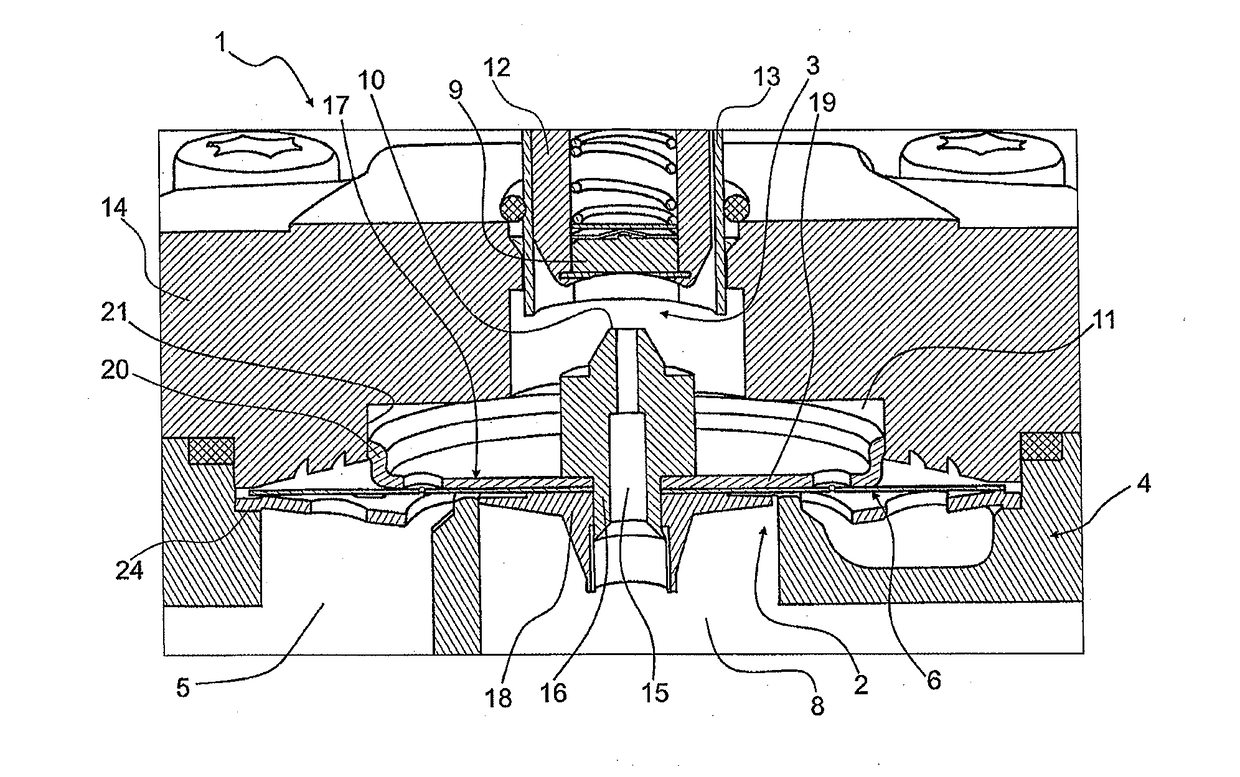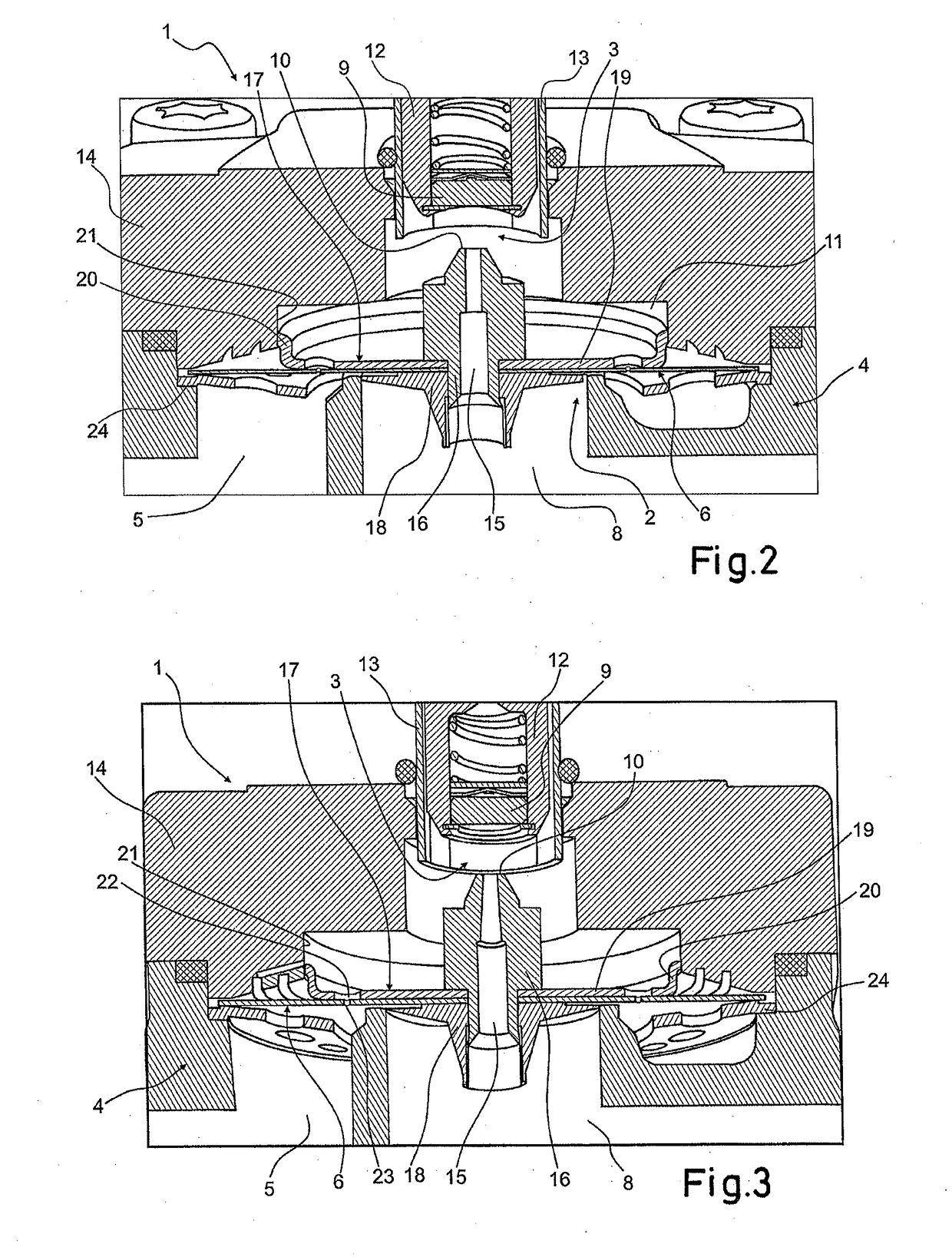Valve
a technology for valves and diaphragms, applied in the field of valves, can solve the problems of limited material choice for diaphragms and limitation of valve applications
- Summary
- Abstract
- Description
- Claims
- Application Information
AI Technical Summary
Benefits of technology
Problems solved by technology
Method used
Image
Examples
Embodiment Construction
[0028]FIG. 1 to 5 show a valve 1 comprising a main valve 2 and a pilot valve 3. Both the main valve 2 and the pilot valve 3 are arranged in a common housing 4.
[0029]An inlet 5 leads to the main valve 2, which is in FIG. 1 to 5 closed by a diaphragm 6 engaging a main valve seat 7. In an open state of the main valve 2, the fluid can pass the main valve 2 towards an outlet 8.
[0030]The pilot valve 3 here is a solenoid valve, where the coil of the valve is not shown for simplicity. In FIG. 1 to 5 the pilot valve element 9 does not engage the pilot valve seat 10, and therefore the pilot valve 3 is open.
[0031]The diaphragm 6 separates the inlet 5 and the outlet 8 from a pilot chamber 11. The diaphragm 6 is preferably made from a non-reinforced polymer or rubber material.
[0032]The pilot valve 3 comprises a pilot valve member 12, in which the pilot valve element 9 is arranged.
[0033]The pilot valve member 12 is slidably arranged in an armature tube 13. The housing 4 comprises a cover 14 in wh...
PUM
 Login to View More
Login to View More Abstract
Description
Claims
Application Information
 Login to View More
Login to View More - R&D
- Intellectual Property
- Life Sciences
- Materials
- Tech Scout
- Unparalleled Data Quality
- Higher Quality Content
- 60% Fewer Hallucinations
Browse by: Latest US Patents, China's latest patents, Technical Efficacy Thesaurus, Application Domain, Technology Topic, Popular Technical Reports.
© 2025 PatSnap. All rights reserved.Legal|Privacy policy|Modern Slavery Act Transparency Statement|Sitemap|About US| Contact US: help@patsnap.com



